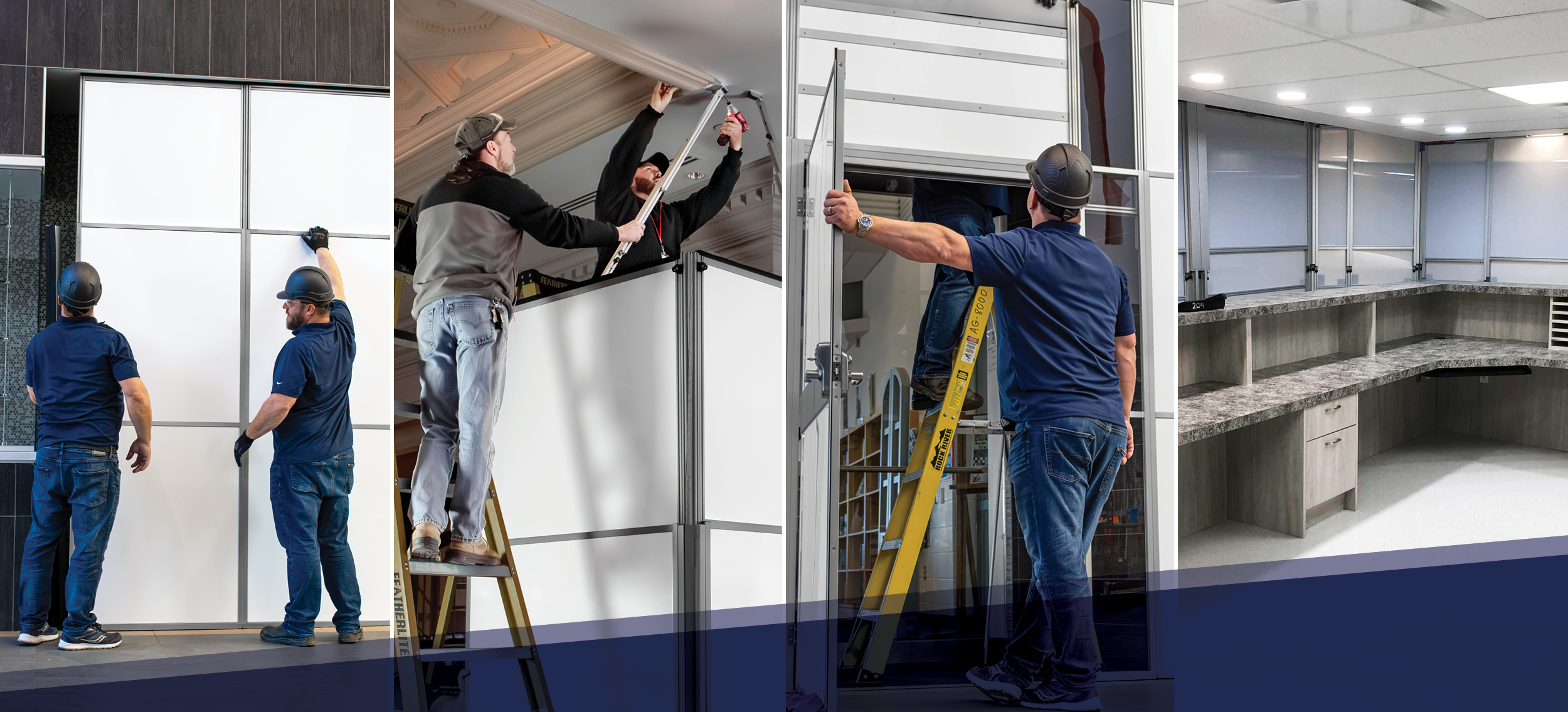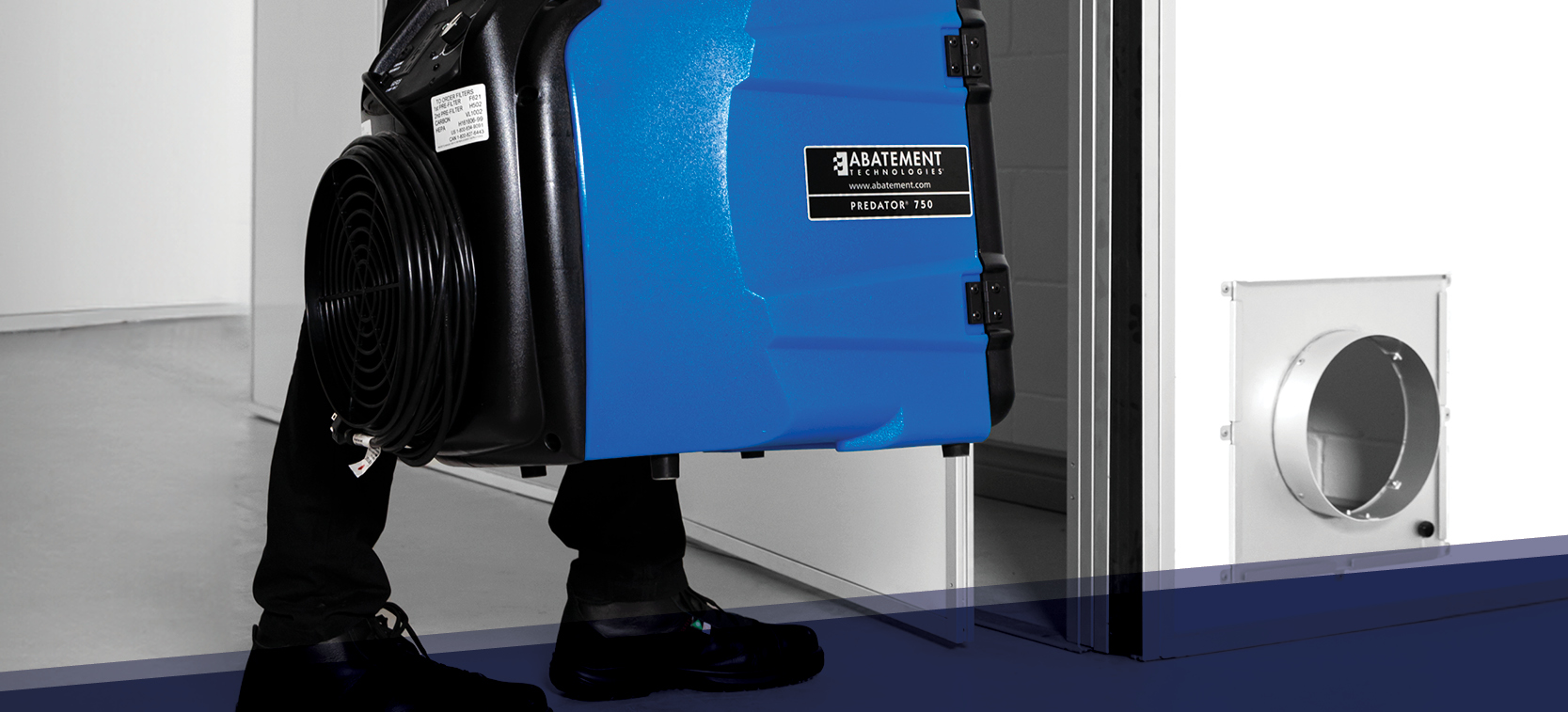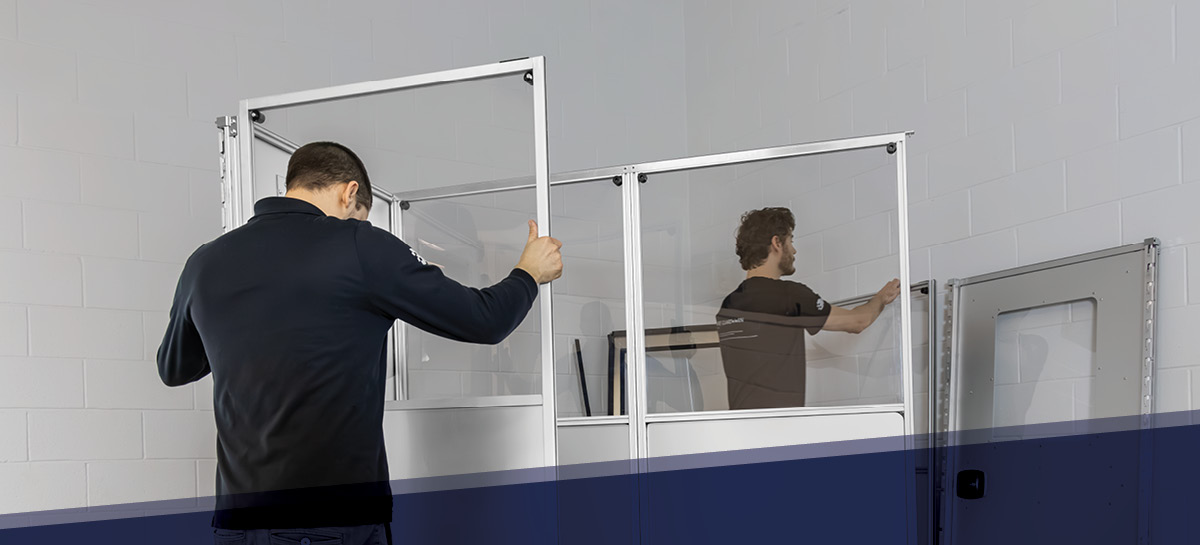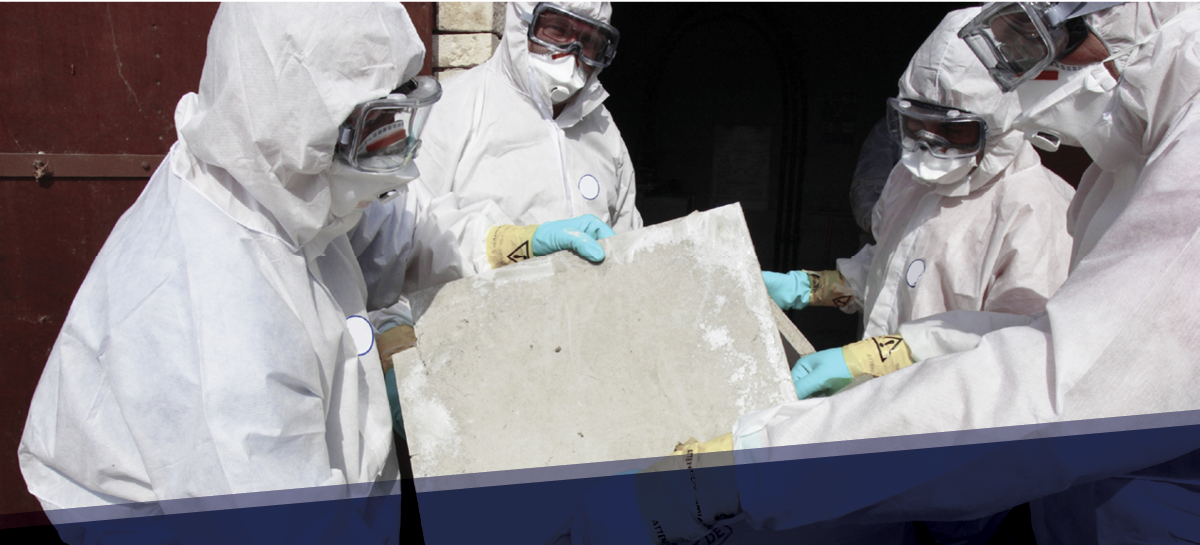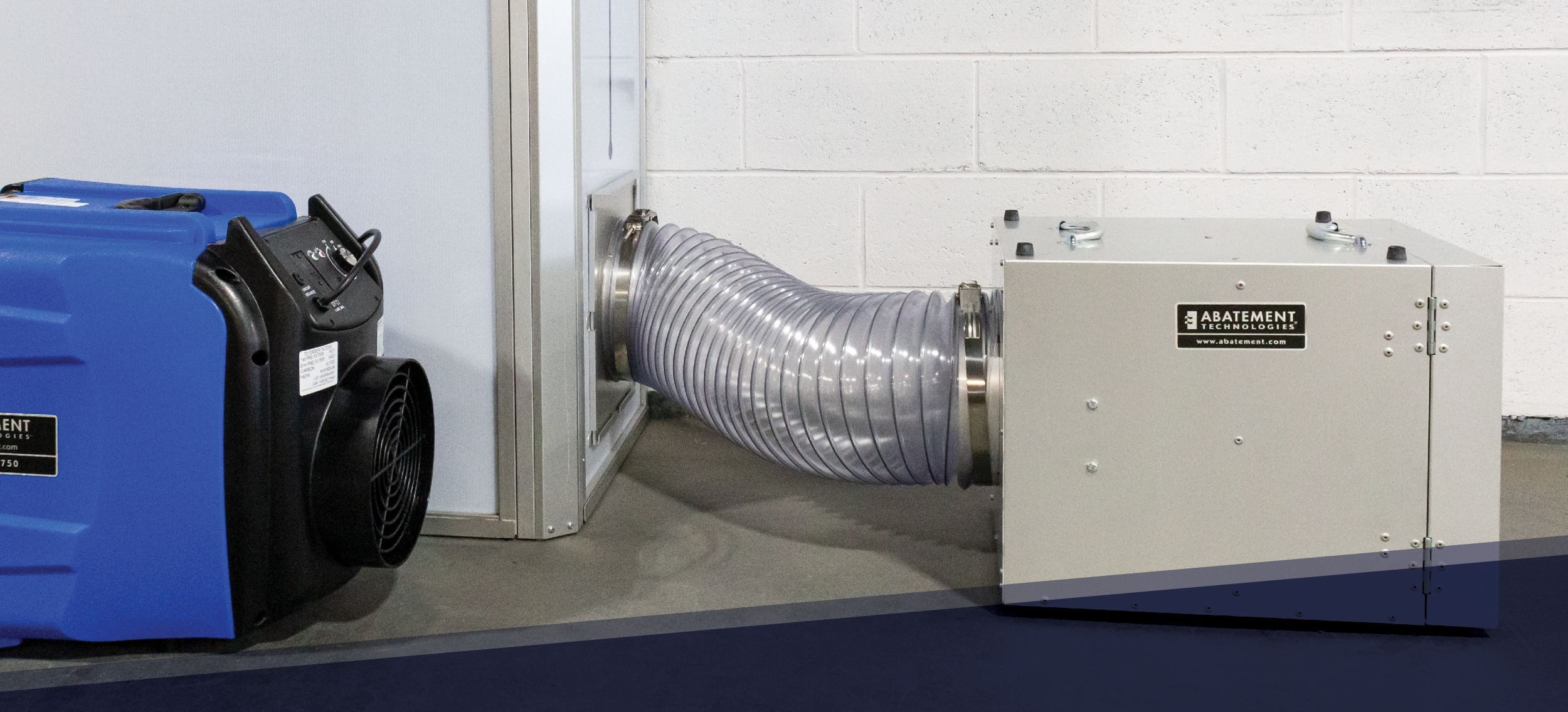Temporary modular walls have grown in popularity in recent years as a reliable alternative to traditional solutions, like drywall and poly sheeting. Due to their reusability, flexibility, and cost savings, temporary wall systems are a great solution for a variety of projects.
At Abatement Technologies, our SHIELD WALL™ containment solution has been successful in a wide range of commercial construction projects–both inside and outside of healthcare. Here’s a quick look at some examples of how industry experts are leveraging SHIELD WALL™ temporary walls to protect people from airborne contaminants during construction in occupied settings.
Hospitals and Long-term Care Facilities
Infection control and reducing healthcare associated infections (HAI’s) has become a central concern in healthcare construction. In the US and Canada, code compliance is required in all healthcare facilities. Many regulations and standards require containment barriers, like our SHIELD WALL™ solution, to prevent pathogens from entering patient care areas. For a complete solution, SHIELD WALL™ is used in conjunction with our high-efficiency, HEPA-filtered portable air scrubbers, and monitoring equipment to effectively isolate, capture, and control airborne dust particles and pathogens. Additionally, SHIELD WALL™can be easily configurable to create anterooms and patient isolation rooms.
Schools
Schools and college/university campuses environments support a range of interests and activities for a large and diverse population. When construction or renovation needs arise, they often can’t be put off until a break or summer recess, requiring construction to occur in occupied spaces. During these projects, it’s important to minimize the disruption of construction noise and prioritize safety for all. Our SHIELD WALL™ temporary containment solution not only blends in with its surroundings, its superior sound attenuation significantly reduces noise to allow projects to move forward without disruptions.
Data Centers
Data centers are not only massive investments, they’re integral to the operations of many organizations. With various pieces of sensitive equipment and hardware, even the tiniest particle of dust can cause serious damage, risking the integrity of stored data. Because of this, it's important that a modular containment solution, like SHIELD WALL™, is used to prevent any damage to the equipment. And to further protect equipment, SHIELD WALL™ is used in conjunction with air filtration devices to keep the area pressurized and monitored, ensuring electronics are dust free for optimal performance.
Airports
Airports today have become more than just a center of transportation—they’ve become a hub of commerce and development. In fact, according to the FAA's Air Traffic Organization (ATO), approximately 2,900,000 passengers fly in and out of U.S. airports on any given day. And, to keep up with the traffic, airports are constantly undergoing renovation and construction. However, while construction is underway, navigating flight checkpoints and finding the right terminal can be challenging for even the most seasoned traveler, especially those unfamiliar with the terminal’s design. Simple signage and barriers can be confusing, and don’t always discourage people from entering.
With a containment solution, like SHIELD WALL™, airports can effectively conceal construction areas to appear as if it’s a regular wall within the airport. This eliminates potential confusion and helps travelers safely navigate around the construction site.
Malls
Modular wall systems in retail and mall construction is a practical way to keep the stores not involved in the project open to the public, without sacrificing the aesthetic of the store fronts. Instead of the traditional drywall with branded logos, temporary containment walls offer retailers a reusable option that doesn’t sacrifice the safety of shoppers. If branding the area under construction is required then custom graphics can be easily applied to the temporary walls letting shoppers know what’s “coming soon”.
Residential Buildings
When renovations are required in residential buildings, like apartment complexes and other multifamily housing, concealing the construction area is essential in protecting the safety of tenants. And, minimizing noise and disruptions is a valuable bonus. Our SHIELD WALL™ temporary containment solution not only effectively protects tenants from breathing in any potential harmful pathogens, its superior sound attenuation protects tenants from noise disruptions.
Office Spaces
Think outside of the box, or in this case, outside of the cubicle! During construction and renovations, it’s important to find a balance between getting the work done in an efficient manner without disrupting office production. As the central location for many companies, a productive work environment leads to successful operations. Because of this, it's crucial to maintain a quiet workplace throughout the duration of the project.
Additionally, SHIELD WALL™ is so flexible that it’s not just used for construction purposes. Many facilities have used the modular system to easily construct temporary cubicles for additional overflow work space.
A versatile solution for any industry
From malls to healthcare to multifamily housing, schools and office buildings, and even data centers, temporary containment wall systems are designed to protect. Our SHIELD WALL™ containment system is trusted by leading contractors across North America to protect people in occupied spaces from potential infections and disruptions of renovation.
Ready to learn more about how SHIELD WALL™ can help you get the job done? Contact us today!

